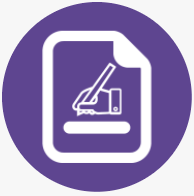
A Power of Attorney (POA) is a legal document that grants someone the authority to act on your behalf in financial, legal, or healthcare matters. However, there may come a time when you need to change or update your Power of Attorney due to various reasons, such as changes in your preferences, the agent’s unavailability, or other personal circumstances. In this blog, we’ll walk you through the steps to change a Power of Attorney to help ensure that your wishes are accurately reflected in the document.
- Understand Your Current Power of Attorney
Before making any changes, it’s crucial to understand the terms and conditions of your existing Power of Attorney. Review the document to identify the appointed agent, the powers granted to them, and any limitations or conditions. This will help you determine what changes you want to make and why.
- Revoke the Existing Power of Attorney
In most cases, the easiest way to change a Power of Attorney is most likely to revoke the existing one. This can typically be done by creating a written and signed revocation document that clearly states your intent to revoke the current Power of Attorney. If you use Gentreo, www.gentreo.com, Gentreo gives you the option to revoke this document while creating your new one. This document should include:
- Your full legal name.
- The date of revocation.
- A clear statement of the revocation of the existing Power of Attorney.
- Your signature, witnessed by at least one person, and notarized if required by your jurisdiction.
Provide a copy of this revocation document to the agent, any financial institutions or organizations involved, and keep a copy for your records.
- Create a New Power of Attorney
With your existing Power of Attorney revoked, you can proceed to create a new one. This involves drafting a new POA document that outlines your updated wishes, including:
- Your choice of agent: Specify the individual or individuals who will be granted the authority to act on your behalf.
- Powers granted: Clearly define the scope and limits of the agent’s authority, such as financial, healthcare, or legal matters.
- Special instructions: If there are specific conditions or instructions you want the agent to follow, include them in the document.
- Witnesses and notarization: Ensure the new POA document is signed, dated, witnessed by at least one person, and notarized if required by your jurisdiction.
- Notify Relevant Parties
Once the new Power of Attorney is created and executed, it’s important to inform all relevant parties, such as financial institutions, healthcare providers, and legal representatives, about the change. Provide them with a copy of the new document and inform them that the previous Power of Attorney has been revoked.
- Review and Update Regularly
Life circumstances change, so it’s important to periodically review your Power of Attorney to ensure it remains aligned with your preferences and needs. You can change it as many times as necessary, provided you are of sound mind and meet the legal requirements.
Conclusion
Changing a Power of Attorney is a manageable process when approached methodically and legally. Regular reviews of your POA are essential to adapt to changing circumstances and ensure that your interests are protected in case you become unable to make decisions on your own. Remember that keeping your Power of Attorney up-to-date is a responsible and proactive step in managing your affairs and protecting your interests.
Don’t wait until it’s too late; start your estate planning journey with Gentreo today. By doing so, you’ll not only protect your loved ones but also gain the peace of mind that comes with knowing your legacy is secure. Click here to join now https://private.gentreo.com/auth/register.
This article is for informational purposes only and should not be considered legal advice. Consult with a qualified attorney or estate planning professional for personalized guidance.







